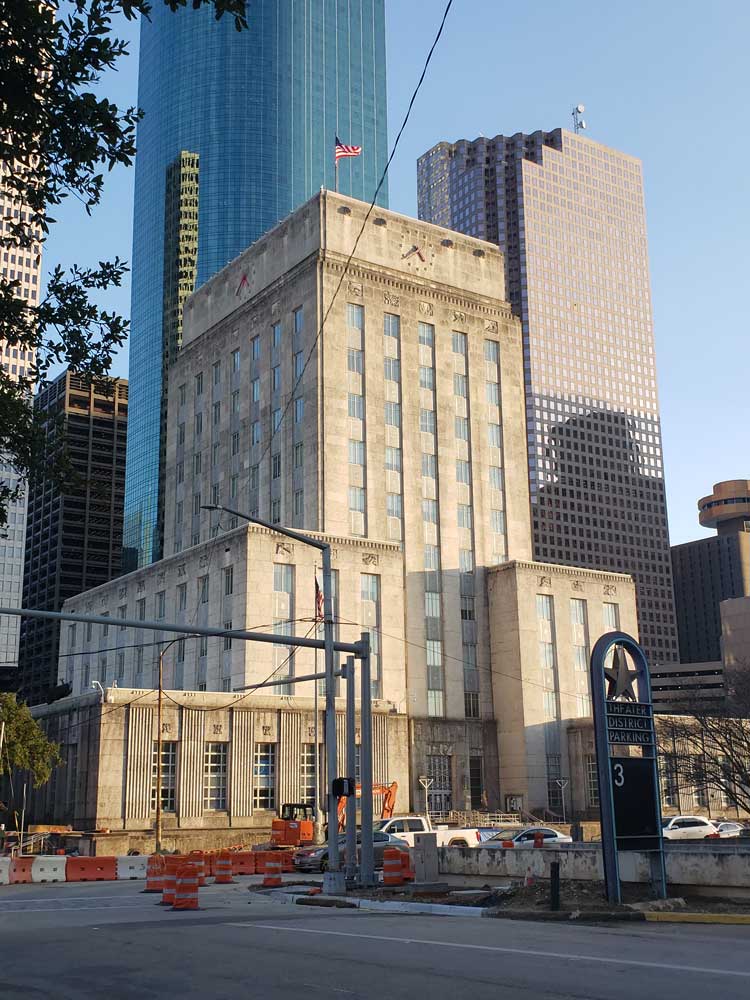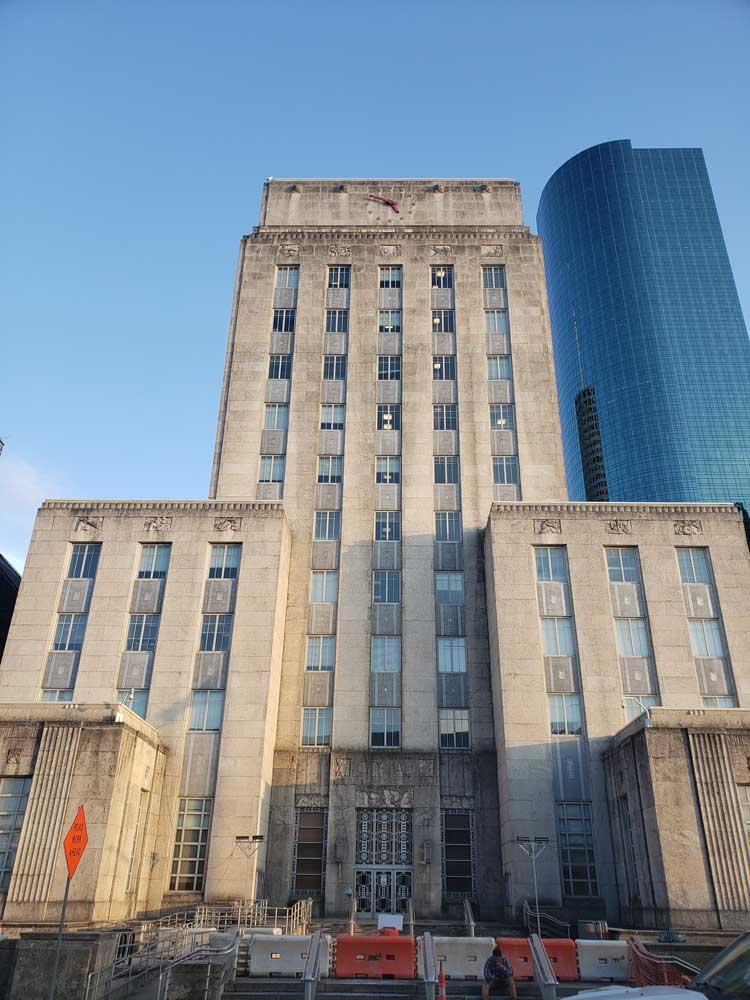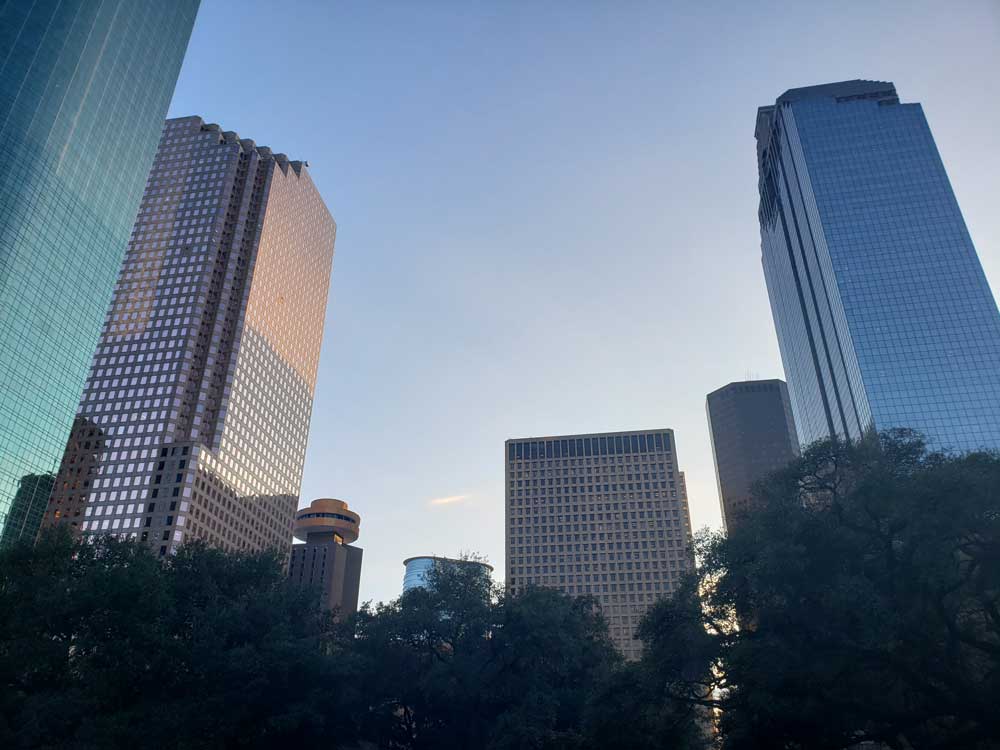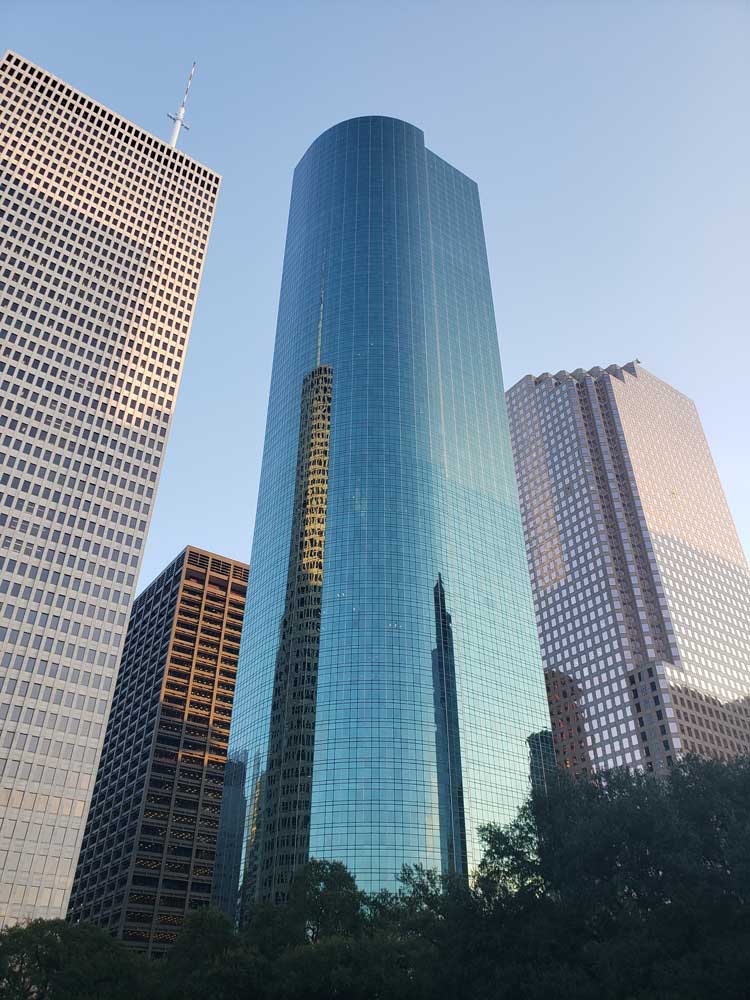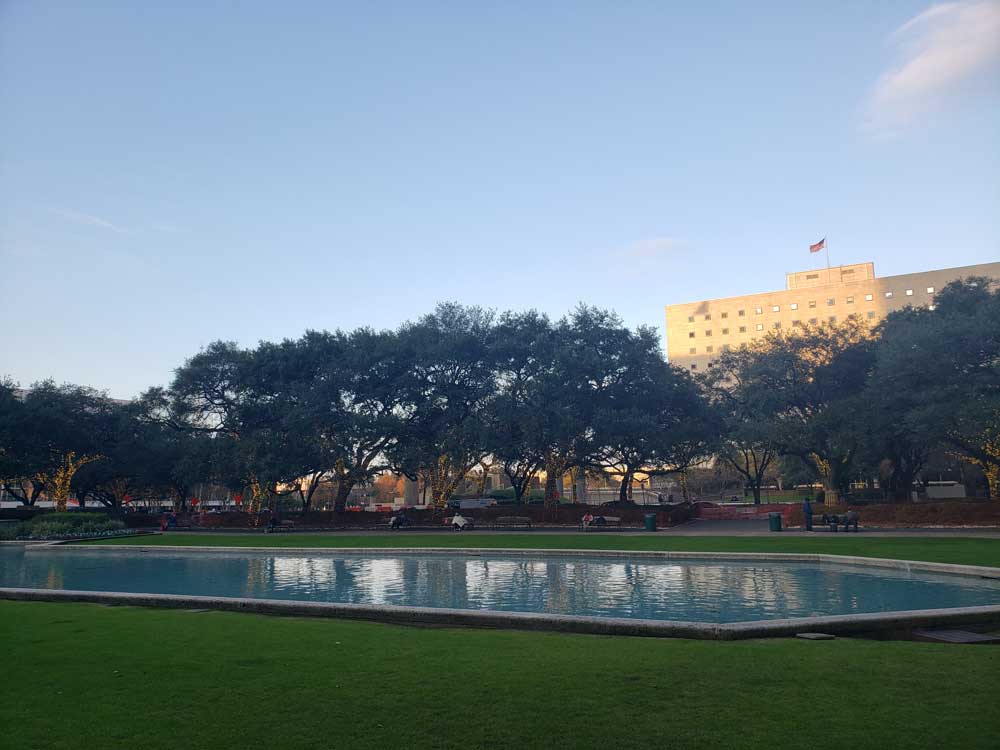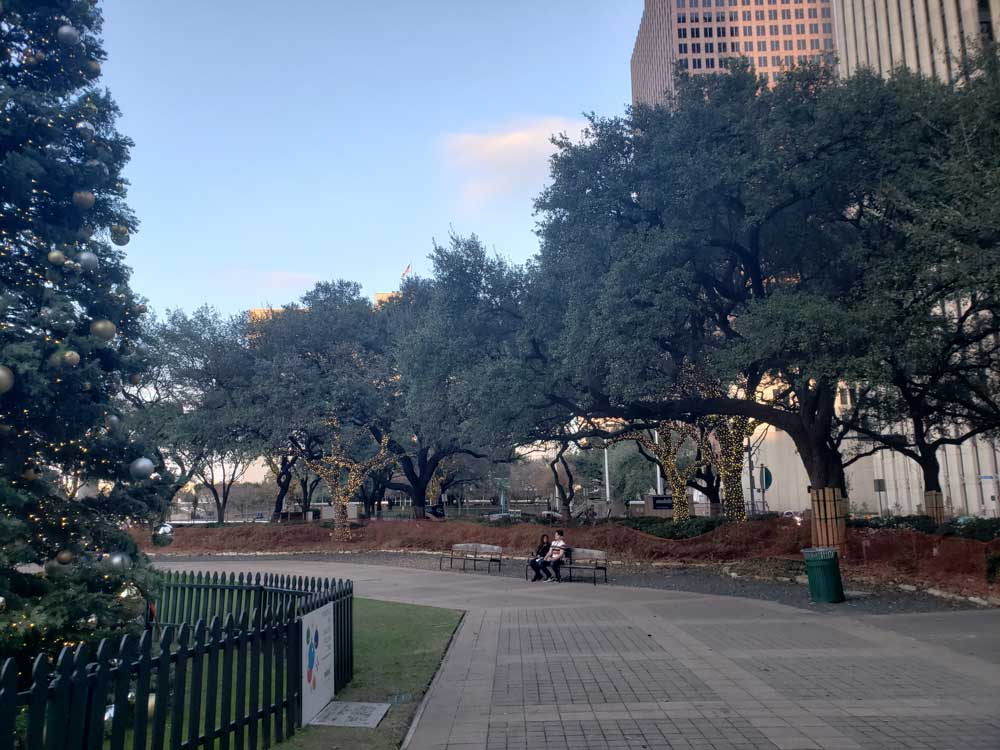Houston City Hall building and square built in a simple, but regal elegance and is regularly used for festivals, protests and concerts
General Information
Head southwest on Bagby St toward McKinney St. Turn left onto McKinney St. Use the left lane to turn left onto Louisiana St. Turn left onto Walker St. Turn left at the 1st cross street onto Smith St.
The Houston City Hall building is the headquarters of the City of Houston's municipal government. Constructed during 1938 and 1939, the City Hall complex is located on Bagby Street on the western side of Downtown Houston. It is surrounded by the Houston Skyline District and is similar in design to dozens of other city halls built in the southwest United States during the same time period. City Hall is flanked by Tranquility Park and the Houston Public Library. The simply designed structure featured many construction details that have helped to make this building an architectural classic.
The architect of the City Hall was Joseph Finger, an Austrian-born Texan architect responsible for a number of Houston-area landmarks. The design on the lobby floor depicts the protective role of government. In the grillwork above the main entrances are medallions of "great lawgivers" from ancient times to the founding of America, including Thomas Jefferson, Charlemagne, Julius Caesar and Moses, and an outdated city seal adorns the interior doorknobs.
The building is faced with Texas Cordova limestone, and the doors to the building are of a specially cast aluminum. The lobby is walled with lightly veined marble. The gateways to the Tax Department are inlaid with bronze, nickel and silver. The elevator lobbies are treated with marble base, walls and wainscoting. Above the lobby entrance is a stone sculpture depicting two men taming a wild horse, which is meant to symbolize a community coming together to form a government to tame the world around them. The plaster cast for this sculpture, and twenty-seven casts for friezes around the building, were done by Beaumont artist Herring Coe and co-designer Raoul Josset.
The front of the city hall building steps down to a small park, George and Martha Hermann Square, which is dominated by a reflecting pool. This was at one time the homestead of George H. Hermann, for whom Hermann Park in the Museum District is named. Hermann Square contains a simple, but regal elegance and is regularly used for festivals, protests and concerts. To accommodate larger events, the reflecting pool is planked over and tents and kiosks are often erected.
This article uses material from the Wikipedia article "Gerald D. Hines Waterwall Park", which is released under the Creative Commons Attribution-Share-Alike License 3.0
